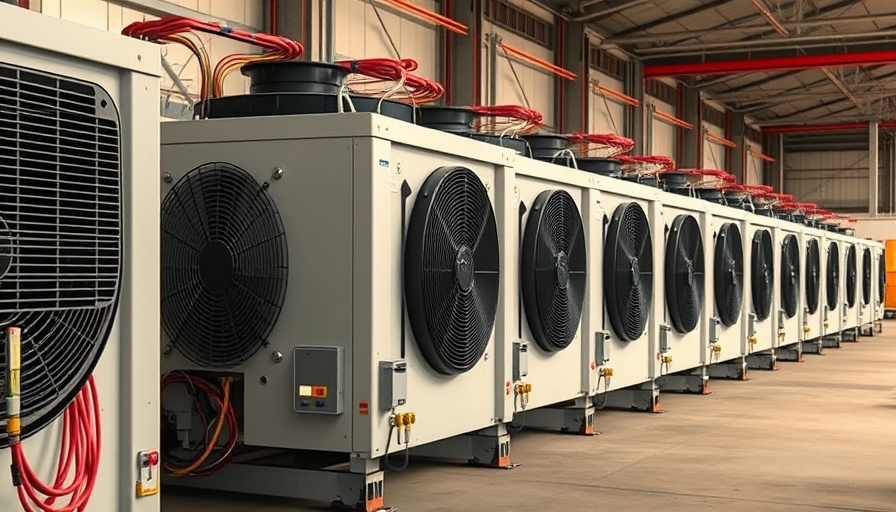
The Essential Need for Backup Cooling Solutions
In today's unpredictable climate and the increasing frequency of natural disasters, having a backup plan for portable cooling HVAC units is more vital than ever. Brandon Elliott, a mechanical technical director, highlights the critical importance of being prepared for emergency situations, such as power outages or system failures, which can disrupt operations. Organizations must recognize that emergencies often arise without warning, making it crucial to develop a proactive response strategy for cooling needs.
The Impact of Recent Events
Just recently, two significant incidents underscored the necessity for a solid portable cooling plan. A power outage striking millions in Spain and Portugal, followed by severe thunderstorms causing blackouts in Pittsburgh, demonstrated the urgency of being prepared. These situations serve as a wake-up call for facilities managers to establish comprehensive cooling strategies that ensure operational continuity and the safety of occupants.
Understanding Your Equipment
When crafting a portable cooling plan, managers must consider several factors regarding their existing equipment. It is not merely about having a few portable units shelved away; they need to assess the age and capabilities of their existing systems. This includes compiling a detailed inventory that highlights critical spaces requiring cooling and outlining the potential impacts of downtime on people, processes, and data. Facilitating this level of understanding emphasizes the value of being equipped for any eventuality.
Preparing for Future Heatwaves: Insights and Strategies
With climate patterns growing increasingly volatile, decision-makers should take preemptive measures to combat rising temperatures. Emergency cooling systems are not just a reactive solution; they should be integrated into routine operational planning. Facilities management professionals are encouraged to outline their plans, train staff on emergency procedures, and consider investing in efficient portable cooling solutions tailored to their specific needs.
Counterarguments: The Challenges of Implementation
While establishing a backup cooling strategy is essential, challenges remain. Budget constraints may hinder some facilities from investing in high-quality portable units. Additionally, confusion regarding which systems are deemed critical for cooling during emergencies can complicate decision-making processes. However, facilitating discussions with stakeholders about the risks of not having a contingency plan could help in justifying the necessary investments.
Emphasizing Health and Safety Concerns
Ultimately, the implications of inadequate cooling in high-stakes environments can be dire. Compromised indoor air quality can lead to severe health issues, putting occupants at risk. Knowing that a timely response can shield employees and customers from heat-related health crises underscores the urgency of having a solid plan in place.
Conclusion: Act Now for a Safer Future
The call to action for facility managers is clear: do not procrastinate in establishing a robust portable cooling plan. The risks posed by unpredictable weather and infrastructure failures necessitate immediate attention. By taking actionable steps now, organizations can safeguard their operations, protect their occupants' welfare, and ensure business continuity during emergencies.
 Add Row
Add Row  Add
Add 




 Add Row
Add Row  Add
Add 

Write A Comment